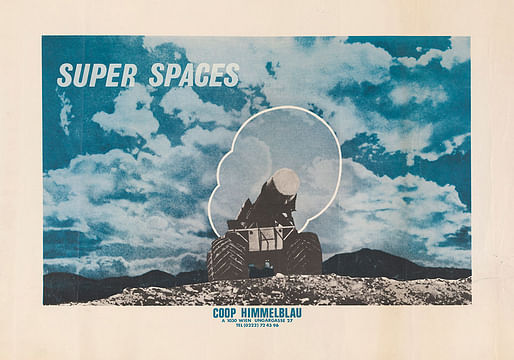

Is architecture a trade or an art?
For Alvin Boyarsky, the answer was clear. As longtime chair of the Architectural Association (AA) in London, and one of the most influential figures in 20th-century design education, Boyarsky argued that architecture was not only a profession but also an artistic venture — an open, wide-ranging practice that comprises drawing and publication as much as it engages design and construction.
This fall, the Mildred Lane Kemper Art Museum at Washington University in St. Louis will present “Drawing Ambience: Alvin Boyarsky and the Architectural Association,” the first public museum exhibition of drawings from Boyarsky’s private collection.
Featuring early formative works on paper by a generation of prominent architects — including Frank Gehry, Zaha Hadid, Daniel Libeskind, Rem Koolhaas and Bernard Tschumi — “Drawing Ambience” explores Boyarsky’s role as a collector of drawings and also, metaphorically speaking, of the ideas and people that have come to define a key moment in architectural history.
Boyarsky’s tenure at the AA — the United Kingdom’s oldest independent architectural school — coincided with a period of great transformation and experimentation. Under his leadership, from 1971 until his death in 1990, the AA helped introduce a wide range of concepts and methodologies that remain relevant today, including new ways of thinking about public space; the connections between contemporary culture and the built environment; the influence of art on architectural practice; and the importance of international, interdisciplinary dialogue.
Through a unique constellation of exhibitions, teaching studios and publication projects, Boyarsky encouraged young architects to embrace the emerging global culture and probe contemporary issues while defining their own visual and spatial languages. Central to this approach was Boyarsky’s conception of drawing, which he saw not only as a representational medium, but also a form of architectural inquiry unto itself.
Encompassing site plans, design proposals, unbuilt works and theoretical investigations, Boyarsky’s collection reflects the collapse of a singular canon of modern architecture and the blossoming of new and varied approaches that are often grouped under the diverse and varied phrase “postmodern architecture.” Highlights range from Eduardo Paolozzi’s appropriations of pop culture, to the technological utopianism of Archigram’s David Greene and Michael Webb, to the gestural mark-making of Libeskind and Peter Wilson.
The AA of the 1970s and ’80s is often considered one of the last great centers of hand drawing to flourish before the rise of computer-aided modeling and draftsmanship. Boyarsky’s collection of architectural drawings, culled from the work of students and practitioners who passed through the school, constitutes a visual record of an important transitional moment. At the same time, its emphasis on the tactile and exploratory foreshadows the renewed interest, in our own digital age, in links between the hand and the imagination.
1 Comment
Where are all the haters? Too busy masturbuilding?
Block this user
Are you sure you want to block this user and hide all related comments throughout the site?
Archinect
This is your first comment on Archinect. Your comment will be visible once approved.